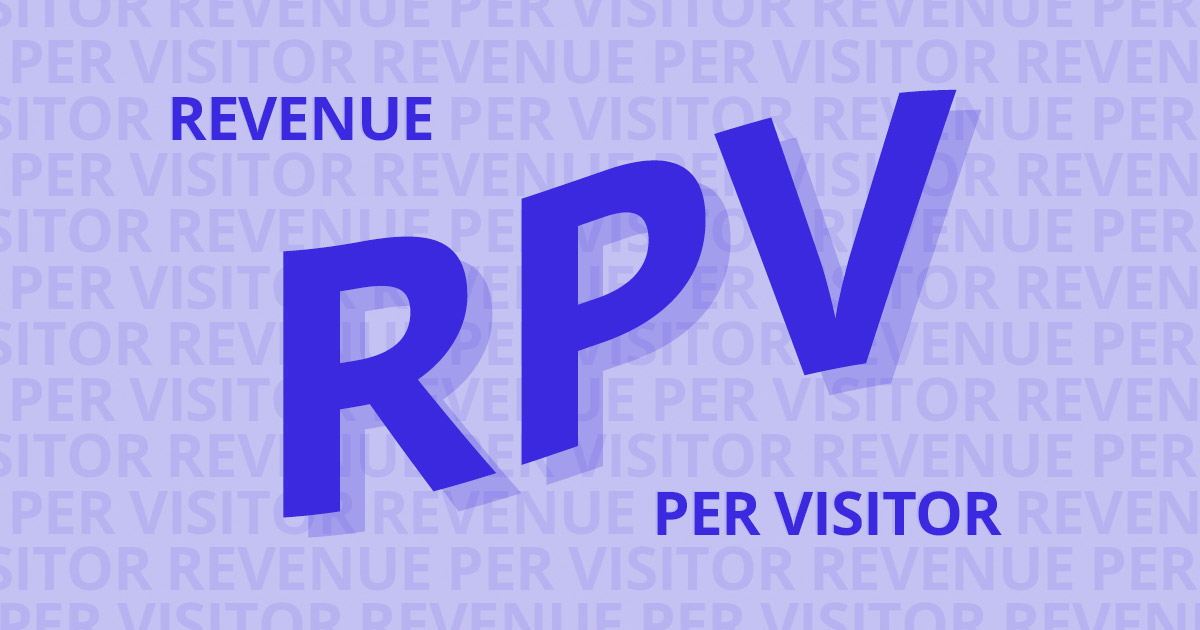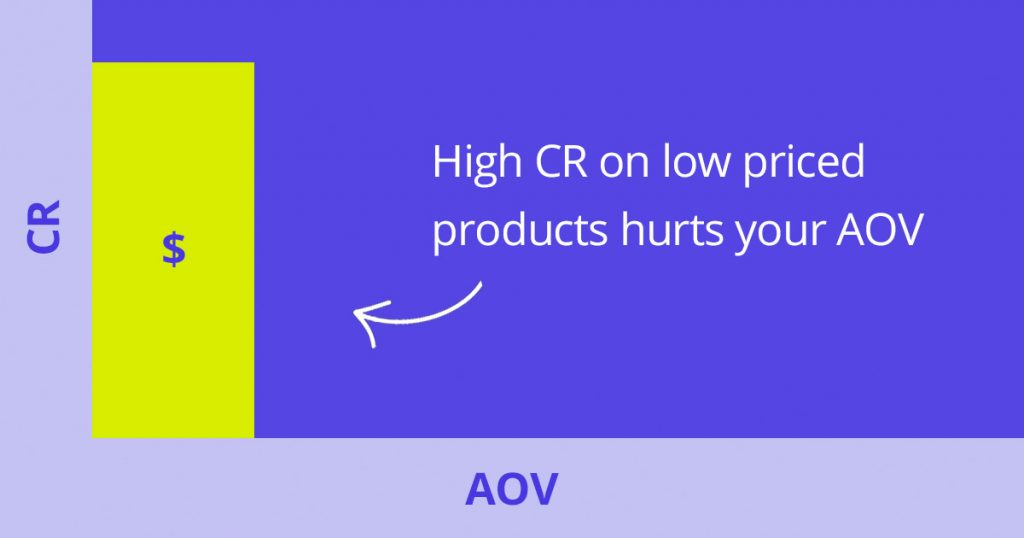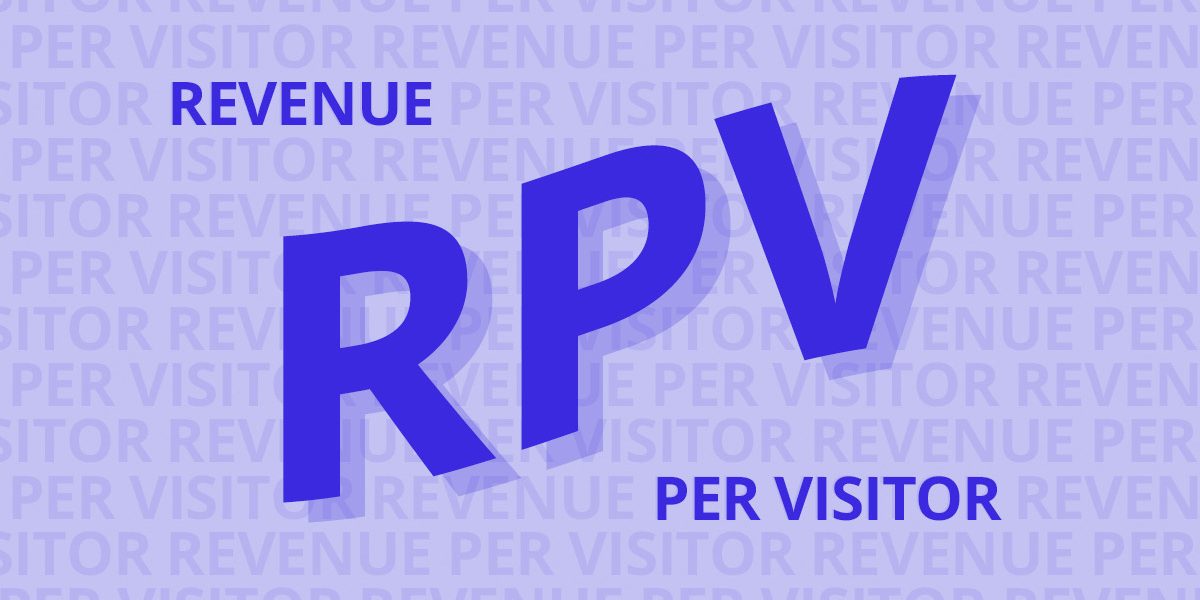RPV (Revenue Per Visitor): #1 Ecommerce Metric For Optimizing Shopify Sales

UPDATED: MAY 2021
As a Shopify merchant, you’re constantly evaluating what you’re doing to convert more customers (and if it’s actually working). There are plenty of metrics you can use, but most of them only tell you part of the story. Knowing how to best direct your efforts, and where to allocate more spending, is absolutely crucial to driving growth.
Through the launch of our new app, HiConversion Recommend, we’ve discovered exactly what that is. Revenue Per Visitor, or RPV, gives you the full picture of how much each additional visitor to your eCommerce website generates for your business.
When you’re trying to increase revenue, you want to understand the behavior of those potential customers who are visiting your site:
- Are they purchasing?
- Are they interacting with your products and product recommendations?
- What are they buying?
- How much are they buying?
- Perhaps most importantly, how much is each visitor to your website generating in revenue?
To answer these questions, we need to talk about the most critical metric to achieve growth on your eCommerce website: Revenue Per Visitor (RPV). So, let’s start by defining what exactly it is.
Revenue Per Visitor: Defined
According to Optimizely: “Revenue per Visitor (RPV) is a measurement of the amount of money generated each time a customer visits your website. It is calculated by dividing the total revenue by the total number of visitors to your site, and is a method of estimating the value of each additional visitor.”
RPV = Revenue/Visitors
Before we get into why this is so valuable to Shopify merchants, here are some key takeaways that we’ll also explore further in this article:
- Popular eCommerce website metrics and how they interact with each other
- How increasing RPV using personalization can increase your revenue overall
- What merchants may be doing wrong when they optimize for the wrong metric
What does Revenue Per Visitor (RPV) really reflect?
In terms of value, you are looking for what will help improve your bottom line while providing quality products and service to your customers. Understanding the complete picture of your visitor performance – the value of your traffic – is critical.
This is especially important when you consider that over 90% of visitors to your site don’t make a purchase. That means there’s so many potential customers that you aren’t even serving.
Here are some things you might be curious about:
- How often are they purchasing?
- How much of a product are they ordering?
- What products can you recommend to them that they would be interested in?
- How many visitors are converting after visiting your website?
- How many people are visiting your website in total?
So, why is it so beneficial to utilize RPV specifically as an eCommerce KPI?
RPV tells you what is actually working with your current strategy, especially in terms of new visitor sales growth. By understanding how much each visitor’s value is in revenue, you can fully understand where to direct your efforts.
RPV’s composite metric combines Conversion Rate (CR) and Average Order Value (AOV) into an actionable data point.
TL;DR: RPV measures the money your website makes every time a customer enters your eCommerce store.
Obviously, this makes RPV an incredibly important way to understand how to constantly grow revenue.
However, many brands still consider conversion rate and average order value to be the most important metrics in measuring revenue growth. We know that while these metrics are useful, they paint an incomplete picture.
Let’s explore why that is by probing each of these metrics.
Conversion Rate (CR) definition
When we say conversion rate, what do we actually mean?
Generally, conversions can refer to any desired goal being achieved by a visitor on your website. This can mean interacting with product recommendations, adding things to cart or completing a purchase.
In the context of eCommerce, however, when we refer to conversions, we’re talking about a customer making it all the way to checkout and purchasing a product. The conversion rate refers to the percentage of visitors to your site that ultimately make a purchase.
Conversion Rate = Conversions/Visits
If your goal is to generate more revenue on your eCommerce site, it is logical to think that increasing the number of conversions (i.e. visitors who buy products on your site) will result in revenue growth.
But it doesn’t always work that way.

The problem with relying on Conversion Rate
While understanding how many visitors are converting is important, it’s insufficient when you are trying to optimize for revenue growth. Part of the problem is that conversion rate only tells you what percentage of customers are converting. Here’s an example:
Let’s say you sell luxury fitness gear through your eCommerce store. You sell compression leggings, athletic-shirts, tank tops, sweatbands, everything that a person would need to work out at home or at the gym. You launched your brand about a year ago, and have been running ads, as well as utilizing HiConversion Recommend to drive storefront engagement and conversion.
You set a KPI to track what your conversion rate amounts to over a 30 day period, and notice that even though you had lots of visitors to your site, only about 2% converted. Because you actually don’t have enough other data, you may jump to take immediate measures to rectify this.
But sometimes measures taken to increase CR can backfire and produce lower overall revenues.
Maybe in an effort to boost your conversion rates, you decide to offer returning customers 25% off their next purchase. Which means that customers might convert more, and pick up a new pair of leggings or a tank top, but it will result in less overall revenue. And part of that is because relying on CR as a metric is not sufficient to telling the complete story of your revenue.
One of the blind spots that exist when relying on CR as a metric is that it treats every purchase the same, which is limiting. By increasing your CR, you could negatively impact AOV and lower overall revenue.
There may actually be a simple reason that your conversion rate is low, and it may not be because your customers aren’t interested in purchasing. It might have to do with another common metric: Average Order Value.
What is Average Order Value (AOV)?
How much are your customers purchasing from your store? This is obviously an important thing to know when you’re trying to optimize for revenue.
Average Order Value (AOV) is a metric representing the value of an average order within a period of time. It is simply calculated by dividing Revenue by Number of Conversions (Orders) in a specific period of time, as follows:
Average Order Value = Revenue/Conversions
While many believe that the key to revenue growth is to take measures to increase AOV, this doesn’t always work out as intended.
AOV Isn’t Everything
Going back to your fitness brand. Currently you are focused on promoting a new collection of bundled workout clothes. Each bundle comes with a t-shirt or tank top, leggings, and a matching sweatband. And because the collections are customizable, they range in price. You still have all your regular items in-stock, and some are on sale.
When you go back to look at your AOV for the month, you notice that it has slipped from around $100 to around $75. Thinking that this means you are selling fewer items, and revenue has dipped, you rush to action. You increase your promotional spending to stimulate higher-ticket sales and AOV increases overall.
What you don’t realize however is that revenue is actually not down at all. Similarly to an increase in conversion rate, there are no guarantees that a lift in AOV will translate into a proportional increase in revenue.
This approach may stimulate sales of higher priced items, but the number of people who will make a purchase may go down, resulting in a decrease of your overall sales/revenue.
While AOV is an important metric to understand it can’t replace the conversion rate, because it doesn’t track the amount of visitors. More visitors could in fact be converting and purchasing less expensive products.
That’s why there’s one metric that really is the best of both worlds, in helping you to understand exactly what’s going on with your visitors, how often they are converting, and how much each individual visitor could be worth.
The best definition of Revenue Per Visitor (RPV)
So how do we define the metric that has it all? What exactly is the importance of using RPV as a metric?
Well, Revenue Per Visitor (RPV) is actually a composite metric that combines conversion rate and average order value into a single number.
RPV represents an interaction between Conversion Rate and Average Order Value making it the most reliable predictor of eCommerce revenue.
If we consider web visitors as the common denominator of eCommerce activity – with the demand generation (marketing) cost measured in per visitor terms – it makes logical sense to divide overall revenue by the number of visitors.
RPV combines the best of both metrics
Because RPV is made up of CR & AOV, it takes into account both the amount being spent, and the number of visitors. This allows merchants to gain a full picture of what each visitor’s value is. A positive-trending RPV means that your current strategy is working. While a negative-trending RPV may mean that there are issues with your eCommerce shopping experience. This could be anything from irrelevant product recommendations, to a faulty shopping cart on the website itself.
And using a solution like Recommend, Shopify merchants are able to gain a clear picture of what’s working, and build upon that success.
RPV and Optimization for Shopify Growth: HiConversion Recommend powered by Amazon Personalize
Since RPV is the most effective indicator of customer growth strategies that are working properly, how can a solution like Recommend help you to increase revenue?
By improving product discovery, Recommend can help merchants put the right products in front of the right visitors at the right time. RPV is one of the most effective metrics to determine whether or not recommendations are positively influencing visitors.
One of most objective ways to measure this is to compare the RPV of shoppers who engaged with product recommendations, to those who didn’t. If the RPV is higher among those who engaged with the recommendations it means that those recommendations are working and resulting in more revenue.
Throughout this article we referenced your hypothetical eCommerce store. And finding RPV using that same example would actually indicate whether or not its current customer acquisition strategy was working.
However, to see how RPV actually works to drive growth on your Shopify store: Take the 7-day product recommendation challenge




